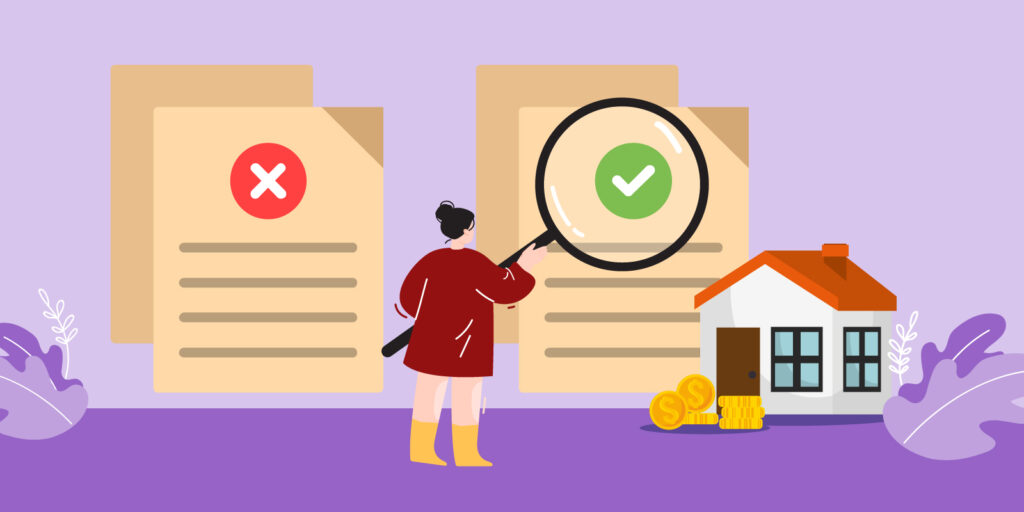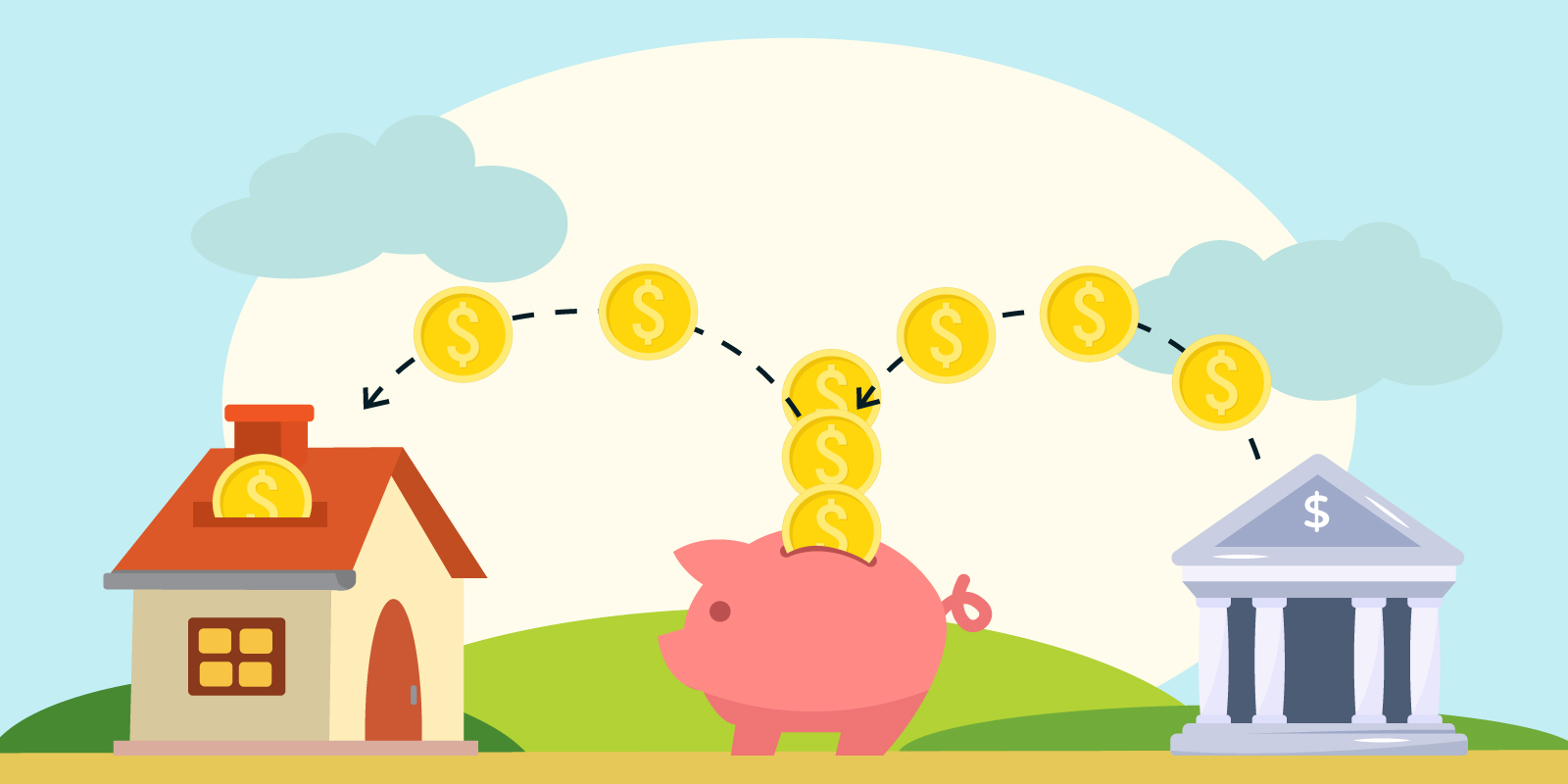Refinancing refers to paying off your current mortgage with a new loan. The goal is to take out a new mortgage that has better terms than the existing one, such as a lower interest rate or shorter repayment term. Although refinancing is common, it doesn’t make sense for all homeowners. Review these pros and cons of refinancing your home to find out if it’s the best course of action for you.
Advantages of Refinancing
Here are some of the most enticing reasons to consider refinancing your home.
1. Reduced Interest Rate
Interest rates go up and down based on market conditions. Buying when rates are high increases the total amount of interest you pay on the loan. For example, if you take out a mortgage for $300,000 at an interest rate of 4%, you’ll pay more than $215,000 in interest over 30 years. At a rate of 6%, the same $300,000 loan would cost you nearly $350,000 in interest, a difference of more than $135,000. Therefore, refinancing when interest rates go down can help you save money over time.
2. Shorter Repayment Term
In most cases, a longer loan term comes with a higher interest rate. For example, you can expect to pay more interest on a 30-year loan than on a 15-year loan. Refinancing gives you an opportunity to lock in a shorter repayment term, lowering your interest rate and the total amount of money you have to pay back.
3. Lower Monthly Payment

Taking advantage of a lower interest rate or shorter repayment term can also lower your monthly loan payment, making your budget a little more manageable.
Imagine you took out a 30-year mortgage for $240,000 at 6% interest. Assuming monthly property taxes of $200 and no private mortgage insurance (PMI), your monthly payment would be about $1,722. If you refinanced at 4% and all other terms remained the same, your payment would decrease to approximately $1,429 per month, saving nearly $300. In this case, refinancing would help you save almost $3,600 per year, leaving you with more money to pay down debt, save for emergencies, or take a vacation.
4. Cash in Hand
In some cases, it’s possible to do cash-out refinancing, which allows you to refinance for an amount that’s greater than your current mortgage balance. For example, if you owe $210,000 on your current mortgage, you may be able to do a cash-out refinance for $250,000. You’d receive the $40,000 difference after closing. According to the Federal Housing Finance Agency, there are no restrictions on how a borrower uses these extra funds. Once you have the cash, you can use it to pay off your credit cards, take a dream vacation, buy a car or cover other expenses.
Disadvantages of Refinancing
Refinancing isn’t for everyone, and here are some drawbacks to keep in mind before you make any decisions.
1. Minimal Savings
Refinancing is worth it if you save a lot of money on interest or lock in more favorable terms. In some cases, however, the small amount of money you save isn’t worth completing the application process and paying the fees.
2. High Closing Costs
Some banks offer no-cost refinancing, but others require borrowers to pay closing costs, including appraisal fees, taxes, title insurance and homeowners insurance. If your lender charges 2% to 3%, that means you’d pay anywhere from $8,000 to $12,000 in closing costs on a $400,000 loan.
It might be worth it to pay these fees if refinancing would help you save $30,000 or more in interest over the life of the loan. If you’d only save $13,000 or $14,000, however, it may not make sense to go through the refinancing process since closing costs would wipe away most of your savings.
3. Loss of Equity
Equity refers to the difference between the value of your home and the balance on your mortgage. If your home is worth $300,000 and you owe $250,000 on your home loan, for example, you have $50,000 in equity. When you do a cash-out refinance, the cash comes from your equity. Therefore, refinancing may result in a loss of equity, reducing your overall net worth.
4. Difficulty Qualifying
If you don’t have great credit, you may find it difficult to qualify for refinancing, especially if you’re looking for better terms than you have on your existing loan. Even if your credit scores are high, you may not have enough equity to refinance. Lenders generally like to see a loan-to-value (LTV) ratio of 80% or lower. If you have an 80% LTV, that means you have 20% equity. If you have an LTV ratio of 90% or 95%, you’re unlikely to qualify for standard refinancing.
Alternatives to Refinancing
If your goal is to save money or get cash to pay off other bills, you don’t necessarily have to refinance your existing mortgage. You can take any of the following steps:
- Open a home equity line of credit (HELOC) or take out a home equity loan. These financial products allow you to use your home equity as a source of credit.
- Make extra payments on your current mortgage. When you make an extra payment, be sure to designate it as a “principal-only” payment so that it reduces the principal balance of the loan.
- Apply for a credit card with a 0% introductory rate. If you pay off the balance before the promo rate expires, you can cover household expenses without extra costs.
- Take out a personal loan. This is a good option if you can’t pay off a credit card balance before the introductory rate expires.
Preparing for Refinancing
If you decide that refinancing your home is right for you, gather the following information before you apply:
- Documents related to your existing mortgage
- Proof of income (tax returns, pay stubs, W-2 forms, etc.)
- Statements of debt (credit card statements, loan statements)
- Documents to help verify your assets (bank statements, investment account statements, retirement account statements)
Your lender is also likely to request an appraisal or a professional opinion of your home’s current value. The appraisal helps determine if you have enough equity in the home to qualify for refinancing.
Before the appraisal, make sure your home is clean and clutter-free. If you’ve completed any renovations since you purchased the property, let the appraiser know. It helps if you have receipts and other documents to support your claims. Once the appraisal is complete, stay in touch with your lender to ensure you don’t miss out on any important information related to your application.
To Refinance or Not To Refinance?
Refinancing your home can have a number of benefits, including saving you money on your monthly balance, reducing your loan length and getting some extra spending money for home repairs, retirement, or even that much-needed vacation.
However, refinancing isn’t the best option for everyone, and you’ll need to ask your lender about closing costs, refinancing fees, and the application process before you decide to take the next step.
You might also be interested in: How Many Times Can You Actually Refinance A Mortgage?







